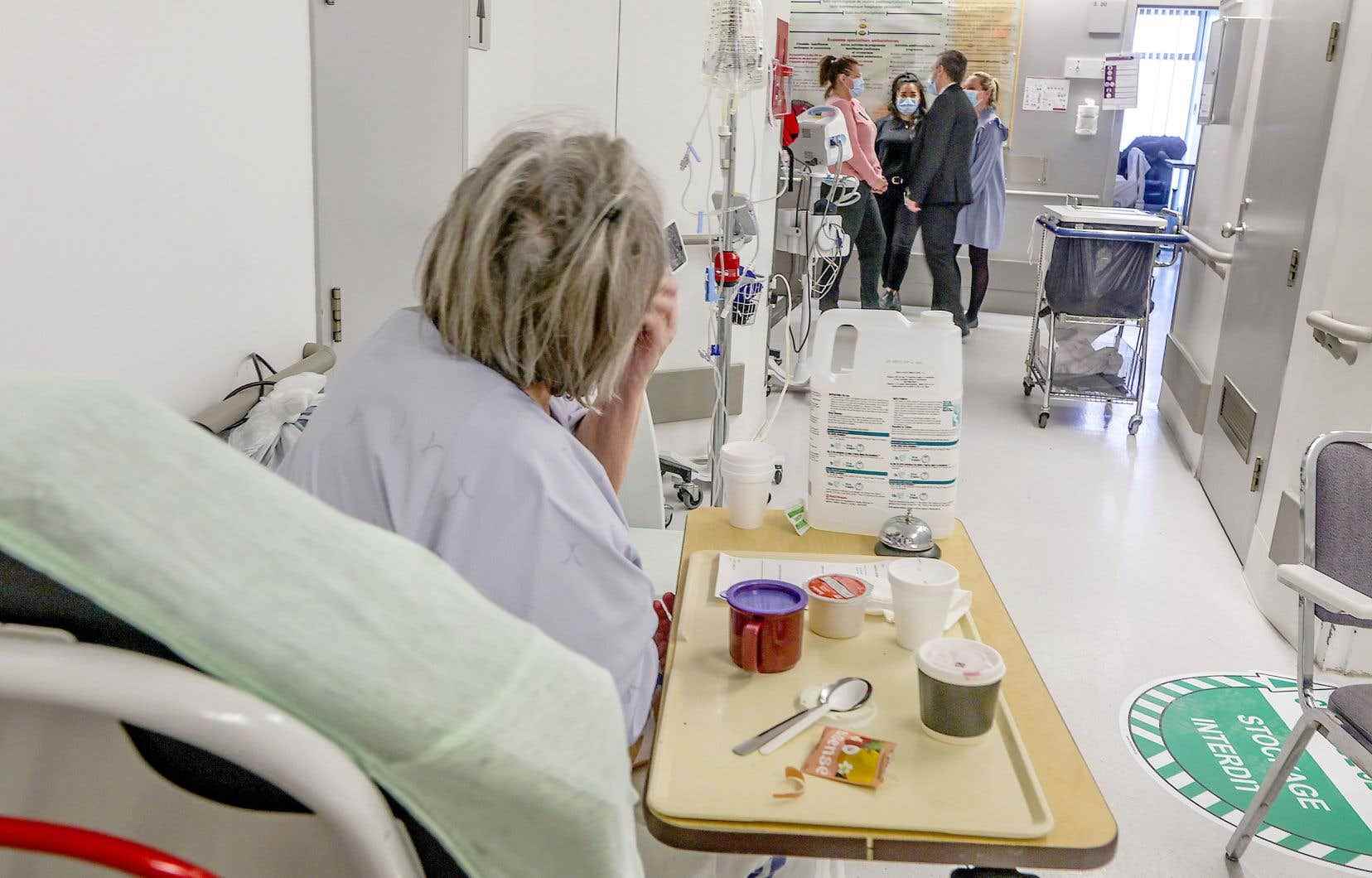Mireille Labelle, 73, is hospitalized for a heart problem in a corridor on the third floor of the Cité-de-la-Santé, in Laval. Installed on a stretcher, she has a counter bell – like the one used by cooks in restaurants – to call a nurse if necessary. She says she is satisfied with her lot, even if she does not have a room. ” I am very happy. It’s quieter than the emergency room. »
There is nothing exceptional about this scene in the Cité-de-la-Santé. Since October, the hospital has been installing patients in corridors on the upper floors when the emergency room is overflowing. When passing the To have to last Thursday, the occupancy rate was 116%, a figure deemed not alarming in the network. Despite everything, the “alert level” of the hospital was at 4, the highest level.
“We are at level 4, not because things are not going so well in the emergency room, but because we have 20 patients awaiting hospitalization”, explains Sébastien Rocheleau, assistant director of the nursing department. , operation pane. “We try to have proactive rather than reactive management of what happens in the emergency room,” he continues.
The hospital center wants to prevent hospital congestion rather than cure it. To achieve this, it has set up a dashboard that includes many indicators: stretcher occupancy rate, waiting time for a consultation with a medical specialist in the emergency room, number of people waiting a hospital bed, an accommodation space or an “overcapacity” space on the floors, etc. Based on this data, an alert level is determined. A management plan provides specific measures depending on the situation.
I am very happy. It’s quieter than the emergency room.
The facility intends to disclose this information to patients. A large screen soon to be installed at the entrance to the hospital will broadcast the alert level as well as a summary of the hospital center indicators. Since Tuesday, Quebec has also published detailed figures concerning Quebec emergencies, in order to encourage the population to consult elsewhere (see box).
“We want people [qui se rendent à la Cité-de-la-Santé] understand why they sometimes wait a little longer, says Sébastien Rocheleau. We want them to understand why we sleep patients in the corridors and what is the objective behind that, [c’est-à-dire] accessibility of care in Laval. »
A “control tower”
Behind the dashboard is a monitoring team, made up of nine employees. His mission ? Monitor indicators in real time, target problems and untie knots. Mr. Rocheleau compares this cell to an “airport control tower” which coordinates not air traffic, but “hospital fluidity”. It ensures that the measures to be implemented have been implemented.
Véronique Pellerin, Head of Bed Management, is part of the team. She keeps an eye on the average length of stay of patients. ” [Grâce à notre système]we are able to identify every patient who is medically stable in the hospital,” she says.
We try to have proactive rather than reactive management of what happens in the emergency room
She can therefore follow up to find out what will happen to the patient and when he will be discharged. If this user is waiting for a service, she can contact the management of the CISSS de Laval who is responsible for it (eg rehabilitation or home support) to find out what it will do to take care of him quickly.
Each department must respect deadlines set by the Ministry of Health and Social Services, recalls Véronique Pellerin. “Roughly speaking, in rehabilitation, it’s two days, she cites as an example. In CHSLDs and intermediate resources, it’s seven days. »
The implementation of this unit is producing results, according to Véronique Pellerin. “At the end of August, we had 70 users [hospitalisés, mais ne requérant plus de soins de courte durée], she says. Today, we are down to 29.” The number of patients waiting for a place in a CHSLD, meanwhile, has fallen from 40 to less than 10 per day “for a few weeks”.
According to Sébastien Rocheleau, doctors have “a lot” contributed to the project of hospital fluidity. Specialists now have access to a tool on their cell phones that tells them which patients they need to see in the emergency room, how long they have been waiting for their consultation and what the reasons are.
